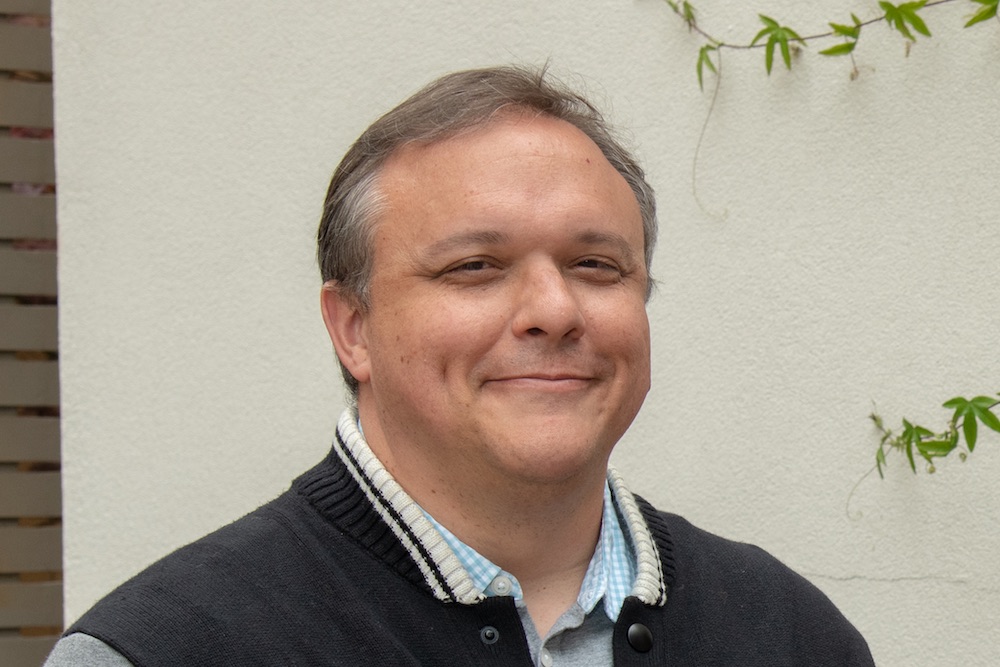
J Provine, PhD, is the CEO and co-founder of Aligned Carbon, a startup that has developed a breakthrough synthesis and purification technology for aligned, semiconducting carbon nanotubes (CNTs) at wafer scale. His team believes that Aligned Carbon is the crucial missing piece in an industry that has long been hopeful of – yet historically disappointed by – the promise of CNTs.
Dr. Provine has over 20 years of experience in nanofabrication, beginning with his PhD studies at Cornell University, with a deep expertise in MEMS, atomic layer deposition, and a variety of semiconductor technologies. Continuing through the decade-plus he spent as a senior research scientist and Adjunct Professor at Stanford University, Dr. Provine consulted widely with established companies (Veeco, Bosch) and early-stage startups (Quantumscape, Spark Thermionics). He continues to be deeply involved in activities with the NSF and DOE. Dr. Provine also mentors other deep tech startup founders.
Tell us a little about your journey. How’d you end up in the driver seat of a semiconductor company?
I have worked in nanotechnology, particularly semiconductor-related research, since the late ‘90s. Before that, I was fixated on particle physics. I never planned on starting a company. I felt at home in the university setting. Over my career, I started spending more time consulting companies. I had great collaborators and PIs at Stanford, but I was searching for an opportunity to stretch myself in more of a leadership role, building a team with a focused technology that could greatly impact computing. I thought that would happen in the academic setting, but I saw so many revolutionary technologies get stuck in academia, so I looked outside the ivory tower. The technology behind what would become Aligned Carbon was the most interesting, high-value opportunity I had ever seen, and so I decided to take the leap and start the company. I saw the potential for my particular skills and background to improve material manufacturing, and that continues to drive me forward today.
Tell Us about Aligned Carbon. What have you been working on?
Aligned Carbon manufactures carbon nanotubes (CNTs) for use in integrated circuits. There has been a tremendous amount of research showcasing the promise of CNTs for use in nanoelectronics. Particularly, my Stanford colleagues Prof. Philip Wong and Prof. Subhasish Mitra led research programs in this area for decades. This research never made a commercial impact: issues with the CNT starting material played a big role in inhibiting broader applicability. We’re changing that at Aligned Carbon.
The semiconductor ecosystem is a huge, global endeavor. Aligned Carbon’s north star has been to revolutionize high performance computing, where gains in speed and energy efficiency can make an enormous impact. The impact CNTs can have for integrated circuits is even broader, including RF data transmission, power circuitry, satellite/space based circuits, and sensors. At Aligned Carbon, we are continuing to push the industry’s understanding of and capabilities in these areas.
What problems are you trying to address and why are CNTs uniquely suited to address them?
For 60 years, silicon has been able to solve most of our semiconductor needs for integrated circuits. Unique materials have emerged over the last few decades that have added special capability where silicon was not able to provide optimal performance. We have seen this in GaAs and other III-V semiconductors for photonics, and now GaN and SiC for power electronics. The unique material properties of CNTs, including high mobility, small body length, and enormous current density capacity, have such enormous potential to drive circuitry forward. Additionally, CNTs can deliver high performance transistors for logic with a low thermal budget (<300C), which enables monolithic integration on top of existing circuitry or temperature-limited substrates. This match of performance and integration is unique and marks CNTs as the best candidate for monolithically-integrated 3D logic.
Carbon Nanotubes went through a hype cycle before but did not pan out. Why, and what have you guys solved uniquely?
At IBM in the 2000’s, so much great work happened, but there were many issues with manufacturability and reliability of the material. At the time, there was an emphasis on directed synthesis/growth of CNTs, growing the specific kind of CNT you wanted (semiconducting vs metallic or even single chirality*) right where you wanted it. That proved to be a very challenging – perhaps impossible – problem, particularly when targeting a semiconducting-to-metallic CNT ratio of greater than 100,000:1. Sorting CNTs by polymer conjugation, commonly referred to as solution purification, has made great headway in solving the semiconductor-to-metallic ratio, but at the cost of CNT order and maintaining pristine CNT material.
Aligned Carbon has been focused on a route to having high semiconducting purity while maintaining arrays of CNTs with perfect alignment (no crossings or bundling), all without polymer contamination. This approach means you can have a “thin film” of aligned, purely-semiconducting CNTs that you can pattern as needed with traditional photolithography and etch to make devices.
*Chirality defines the structural and electronic properties of a single-walled carbon nanotube. A vector connecting the centers of the two graphitic hexagons is called the chiral vector, and it determines the structure of a single-walled carbon nanotube. A chiral vector C can be specified by a chiral index (n,m) using basis vectors a1 and a2 of a graphene sheet.
You mention a breakthrough. Tell us more about that.
Earlier this year, Aligned Carbon validated its purification process to greater than 99% semiconducting purity while maintaining fully-aligned material and no discernable polymer contamination on the CNTs. Further, there is a clear line of sight to scaling this to >99.9999% semiconducting purity, with our throughput capable of purifying a 300mm wafer in a few minutes. There is more work to be done, but we are very excited to put this material to work and find its limitations as we continue to refine and improve our unparalleled CNT synthesis and purification.
With this breakthrough, what application areas are you putting your focus on?
While we have always had digital logic as our target application, there are many other opportunities that we are actively exploring. The industry has just scratched the surface on the incredibly powerful new properties of CNTs.
We are digging into the use of CNFETs in RF data transmission, due to sub-THz signal linearity, and power electronics, due to high current-carrying potential. We have also previously looked at a few different types of CNT sensors. Another interesting opportunity is circuitry for use in space, as CNFETs are ~16 times less radiation- sensitive than silicon devices because of their reduced interaction cross-section. All of these are focused around making transistors out CNTs – which is where our material has been focused – and is a very fertile ground.
We are getting some interest across each of these spaces, which is really encouraging, and we do see our expertise in the material lending itself nicely to working closely with partners that like working on major innovations at the device layer.
What does the competitive landscape look like, both within carbon nanotubes but also when it comes to other technologies. Why do you win?
Carbon nanotubes are a remarkable material that have the potential to far outperform all bulk semiconductors out there. But, they need to meet the stringent requirements of a mature and highly-optimized industry. The great promise of CNTs and the hard limits that silicon has reached make that effort well worth it. One type of competition is other emergent materials, such as 2D materials, which possess intriguing material properties. But, they represent a less mature technology/material set that needs even more substantial manufacturing and reproducibility work than CNTs. So for me, CNTs really represent the most promising transistor channel material out there. The key to having reliable CNTs for the IC industry lies in the purity of electronic properties of order of the material. Aligned Carbon has a unique approach to delivering this material that maintains the quality of pristine CNTs and integrates cleanly and at volume with established IC manufacturing.
Solutions for other materials, integration schemes, and architectures are another form of competition for us. That said, the needs of the IC industry are complex, multi-faceted, and large. We at Aligned Carbon will be pushing as hard as possible to bring CHTs into the mix, knowing others are doing the same with their technologies.
What sort of partnerships or companies are you looking for right now?
We are excited to put our material to the test and iterate with collaborators/partners on a variety of transistor applications. We are confident in our ability to supply consistent material for R&D validation. Further, we have a lot of options for tuning our material, including pushing to much higher purity. Qualifying a new material for use in a foundry takes significant time, resources, and effort, but we have a unique material offering that innovative partners can utilize to meet the various challenges in the IC industry.
We as a society have a nearly insatiable desire for greater computing capability. The IC industry is rightfully concerned about that hunger causing significant issues in energy consumption and environmental impact. CNTs are uniquely poised to play a larger role in threading that needle, but we need to be vigilant about validating and verifying the technology to make it ready for mass market prime-time.
How can people get in touch?
We are really excited to talk with folks about our advanced technology. With the major material-level renaissance currently happening in the semiconductor space (as shown in power electronics), we are excited to get our products in front of people.
If you are interested in getting in touch, please feel free to reach out to info@alignedcarbon.com, as our team would be happy to chat. Also feel free to follow our company’s LinkedIn [Linkedin] for regular updates or to connect with our core team.
Also Read:
Executive Interview: Tony Casassa, General Manager of METTLER TOLEDO THORNTON
CEO Interview: Venkata Simhadri of MosChip
CEO Interview: Pat Brockett of Celera
Share this post via:








Quantum Advantage is About the Algorithm, not the Computer